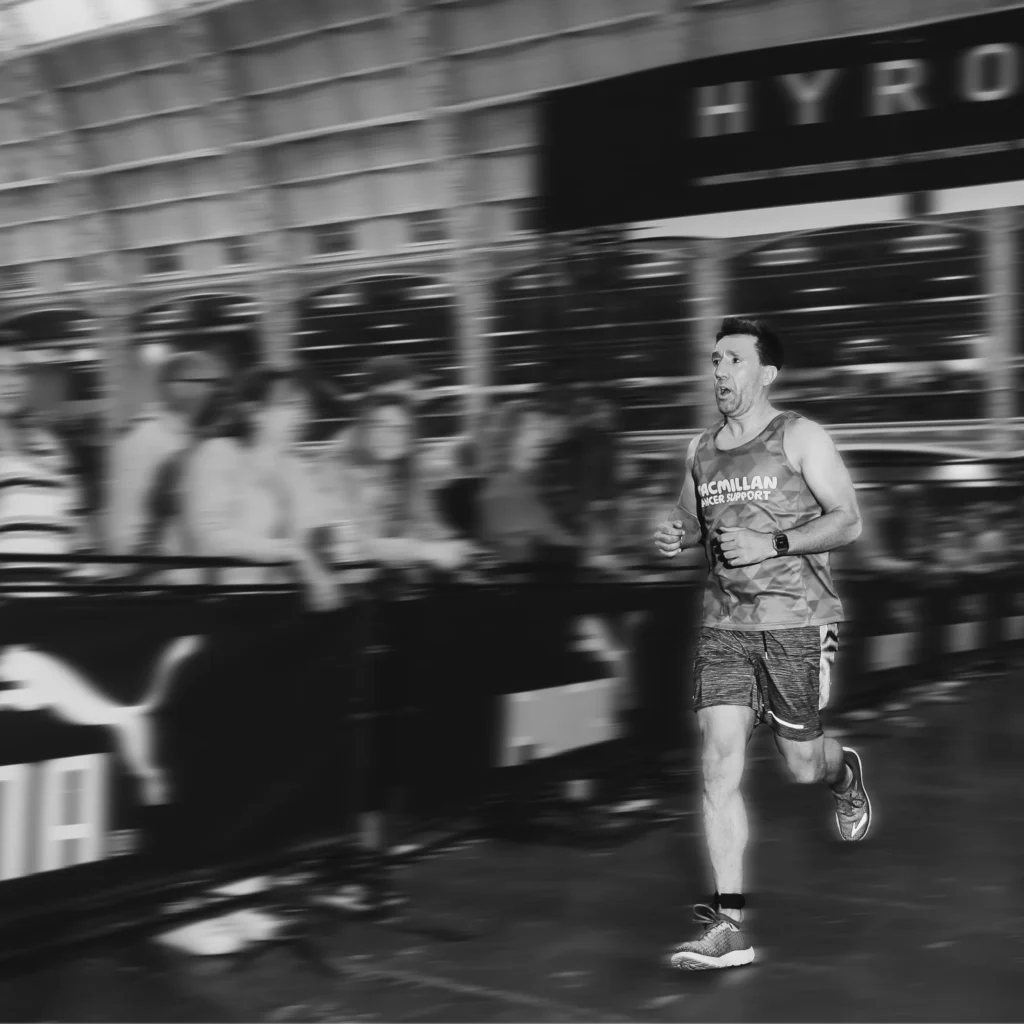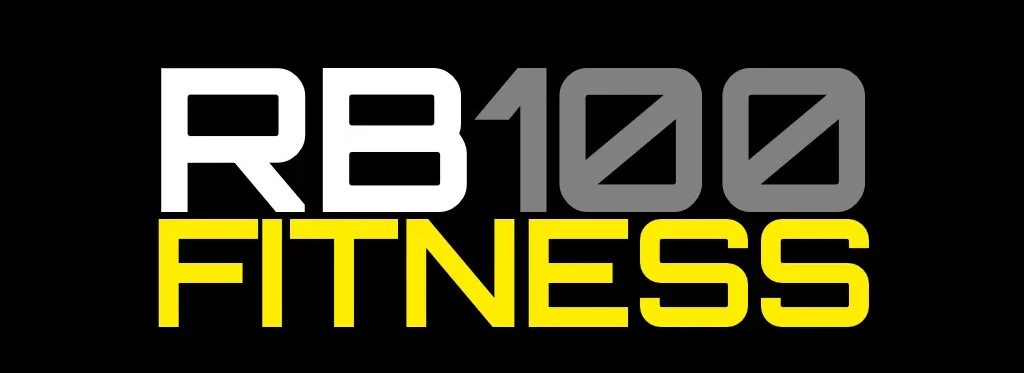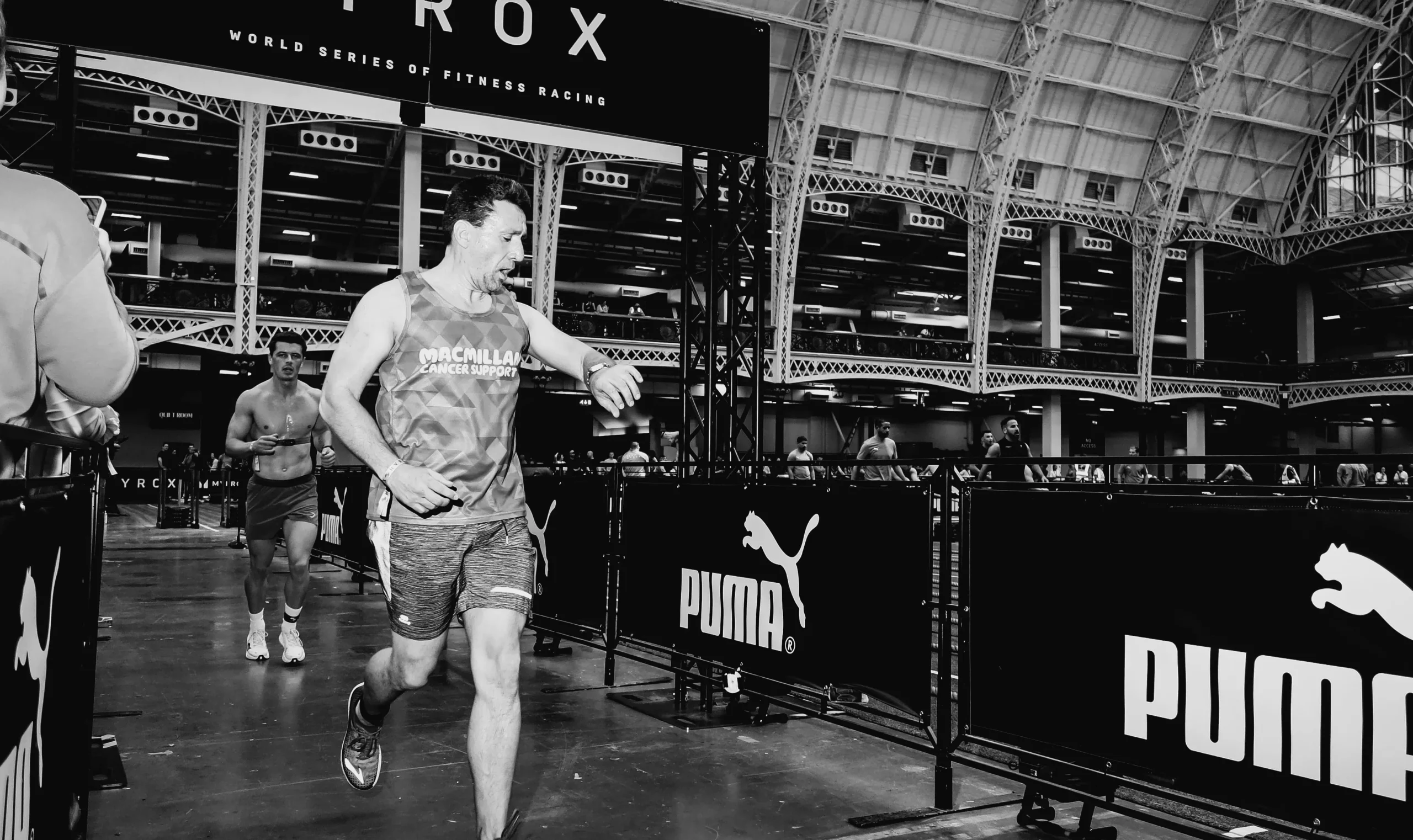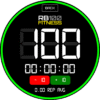Introduction: The Heart of HYROX
Running isn’t just a transition in HYROX it’s the framework that connects every station.
Across eight kilometres, you’ll cover half the total race time on your feet, making your running engine one of the biggest determinants of performance.
But running for HYROX isn’t like a 10K. You’re not chasing pure speed you’re managing pacing under fatigue, heart rate control, and efficient transitions between running and strength work.
“You don’t win HYROX with your first kilometre you win it by holding pace through your eighth.” — RB100.Fitness
The HYROX Run Breakdown
Each HYROX race features eight 1 km runs, each followed by a functional workout:
| Run | Station After | Key Challenge |
|---|---|---|
| Run 1 | SkiErg | Settling nerves and finding rhythm |
| Run 2 | Sled Push | Breathing control before heavy work |
| Run 3 | Sled Pull | Maintaining posture and recovery speed |
| Run 4 | Burpee Broad Jumps | Preventing lactate build-up |
| Run 5 | Row | Resetting heart rate |
| Run 6 | Farmer’s Carry | Staying tall under fatigue |
| Run 7 | Sandbag Lunges | Holding composure late in the race |
| Run 8 | Wall Balls | Final push before finish line |
Your ability to run consistently between these stations determines whether your finish time is controlled or chaotic.
Building Your HYROX Running Engine
Your HYROX running engine combines three key components:
- Aerobic Base (Endurance)The aerobic system powers your recovery between stations. Build it through Zone 2 training long, low-intensity efforts that increase efficiency.See Zone 2 for HYROX: Aerobic Base That Doesn’t Steal Speed.
- Threshold Conditioning (Sustainable Speed)This is your race pace the point just below where lactic acid builds too fast to clear.Include one threshold session weekly, such as:4×1 km @ HYROX pace (4:15–4:30/km for men, 4:45–5:00/km for women), 2-min jog recoveries.
Learn more in Threshold Training for HYROX: Field Tests and Weekly Progression. - Strength-Endurance (Leg Durability)Sleds, carries and lunges fatigue the legs you need to maintain form afterward.Build durability with mixed sessions combining strength and running, e.g.:5×(500 m run + 10 front squats + 10 wall balls).

Pacing Strategy: Finding Your Sustainable Speed
The best HYROX athletes pace within ±5 seconds per km across all eight runs.
To find your optimal race pace, test your sustainable speed using one of these methods:
- Heart Rate: 85–88% of max HR
- RPE (Perceived Exertion): 7.5/10 (challenging but sustainable)
- Pace Benchmark: ~10–15 sec/km slower than your open 10K pace
Example: If your 10K pace is 4:30/km, aim for 4:40–4:45/km in HYROX.
Linked reading: Heart Rate, Pace or RPE: The Best Way to PACE a HYROX
Run-to-Station Transitions
Efficient transitions preserve rhythm and save seconds.
After each run:
- Focus on controlled deceleration before entering the workout zone.
- Take 2–3 deep breaths before gripping any equipment.
- Reset posture shoulders back, core engaged before heavy sled or carry work.
Practice transitions with Brick Sessions for HYROX: Run-to-Station and Station-to-Run.
Cadence, Form and Breathing
Running efficiency comes from rhythm and relaxation.
Keep cadence steady (~170–180 steps per minute) and avoid overstriding.
Focus cues:
- “Quick feet, quiet landings.”
- “Exhale as you drop shoulders.”
- “Posture tall, core light.”
Train this awareness through drills outlined in Breathing, Cadence and Form: Running Economy for HYROX.

Weekly Running Template
To balance intensity and recovery, structure your week like this:
| Session Type | Example Session | Purpose |
|---|---|---|
| Zone 2 Base Run | 45–60 min easy pace | Build aerobic endurance |
| Threshold Intervals | 4×1 km @ race pace | Raise sustainable speed |
| Brick Session | 1 km run + station combo | Practice transitions |
| Recovery Run | 25–30 min light | Promote blood flow and recovery |
See Weekly Engine Builder: The HYROX Cardio Template.
Testing Your Run Fitness
Test every 4–6 weeks:
- 8×1 km Intervals: Average pace within 3% of your target race pace?
- 3×2 km at Race Pace: If you can hold splits evenly, your endurance is balanced.
- Mini Simulation: Combine 4×(1 km run + 1 station) — replicate mid-race fatigue and measure consistency.
“The real test of your running engine isn’t your first split it’s whether you can hold it through the chaos.” — RB100.Fitness
Summary: Build, Don’t Burn
Your HYROX running engine isn’t built on speed alone it’s built on consistency, efficiency and composure.
Develop your aerobic base, refine your threshold, and train transitions until your 8×1 km feels repeatable, not random.
Once you can hold steady pace under fatigue, you’re ready to race smart through Season 2025/2026.
About HYROX Season 2025/2026
- Global race circuit: September 2025 – June 2026
- 8×1 km run + 8 functional stations = 1 standardised challenge
Find your next event in the RB100 Fitness Racing Events Calendar












